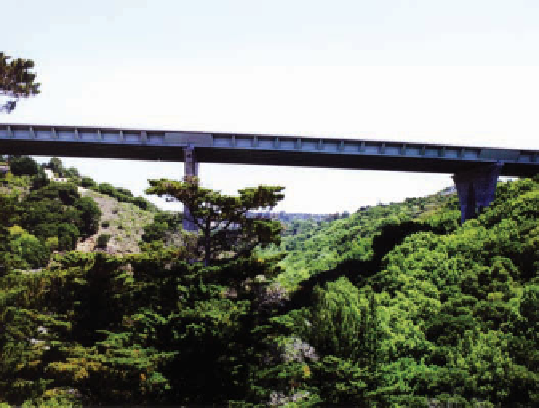Geology Reference
In-Depth Information
radon gas.
Geologic
hazards
account for
thousands
of fatalities
and billions
of dollars in
property dam-
age every year,
and whereas
the incidence
of hazards has
not increased,
fatalities and
damages have
grown because
more and
more people
live in disaster-
prone areas.
We cannot eliminate geologic
hazards, but we can better understand
these events, design structures to pro-
tect shoreline communities and with-
stand shaking during earthquakes, enact
zoning and land-use regulations, and,
at the very least, decrease the amount
of damage and human suffering.
Unfortunately, geologic
information that is readily available
is often ignored or overlooked.
A case in point is the Turnagain
Heights subdivision in Anchorage,
Alaska, that was so heavily damaged
when the soil liquefied during the
1964 earthquake (see Figure 14.19).
Not only were reports on soil stabil-
ity ignored or overlooked before
homes were built there, but since
1964, new homes were built on part
of the same site!
In many mountainous or even
hilly areas, highways are notoriously
unstable and slump or slide from hill-
sides. When this happens, engineering
geologists are consulted for their rec-
ommendations for stabilizing slopes.
They may suggest building retaining
walls or drainage systems to keep the
slopes dry, planting vegetation, or, in
some cases, simply rerouting the high-
way if it is too costly to maintain in its
present position.
As you read the following chapters
on surface processes, keep in mind
that engineering geologists are in-
volved in many aspects of stabilizing
slopes, designing and constructing
dams and fl ood-control projects, and
building structures to protect seaside
communities.
◗
Figure 2
This freeway crosses a small valley a short distance from
the San Andreas fault in California. Engineers had to take into account
the near certainty that this structure would be badly shaken during an
earthquake.
information that can be incorporated
into engineering practice to make free-
ways, buildings, and bridges safer dur-
ing earthquakes.
Natural hazards include wildfi res,
swarms of insects, and severe weather
phenomena, as well as various geologic
hazards such as fl ooding, landslides,
volcanic eruptions, earthquakes, tsu-
nami, land subsidence, soil creep, and
and sets of joints are usually related to other geologic struc-
tures such as large folds and faults.
We have discussed columnar joints that form when lava
or magma in some shallow plutons cools and contracts (see
Figure 5.6). A different type of jointing previously discussed
is sheet jointing that forms in response to pressure release
(see Figure 6.4).
Another type of fracture known as a
fault
is one along which
blocks of rock on opposite sides of the fracture have moved
parallel with the fracture surface, and the surface along which
movement takes place is a
fault plane
(
plane, the rocks on opposite sides may be scratched and pol-
ished or crushed and shattered into angular blocks, forming
fault breccia
(Figure 10.15c).
Notice the designations
hanging wall block
and
footwall
block
in Figure 10.15a
.
The
hanging wall block
consists of
the rock overlying the fault, whereas the
footwall block
lies
beneath the fault plane. You can recognize these two blocks
on any fault except a vertical one—that is, one that dips at
90 degrees. To identify some kinds of faults, you must not
only correctly identify these two blocks, but also determine
which one moved relatively up or down. We use the phrase
relative movement
because you cannot usually tell which
block moved or if both moved. In Figure 10.15a, the footwall
block may have moved up, the hanging wall block may have
moved down, or both could have moved. Nevertheless, the
hanging wall block appears to have moved down relative to
the footwall block.
◗
Figure 10.15a).
Not all faults penetrate to the surface, but those that do
might show a
fault scarp
, a bluff or cliff formed by vertical
movement (Figure 10.15b). Fault scarps are usually quickly
eroded and obscured. When movement takes place on a fault


Search WWH ::

Custom Search